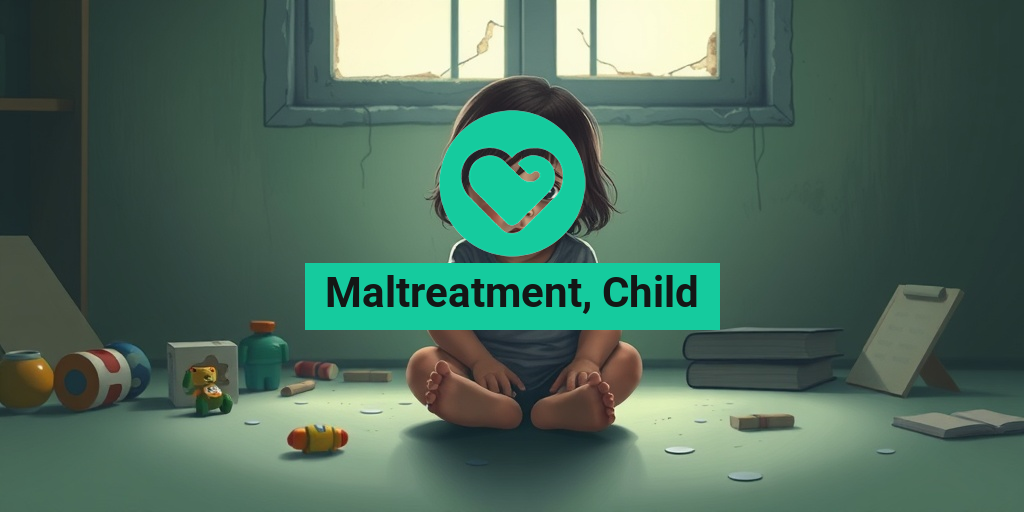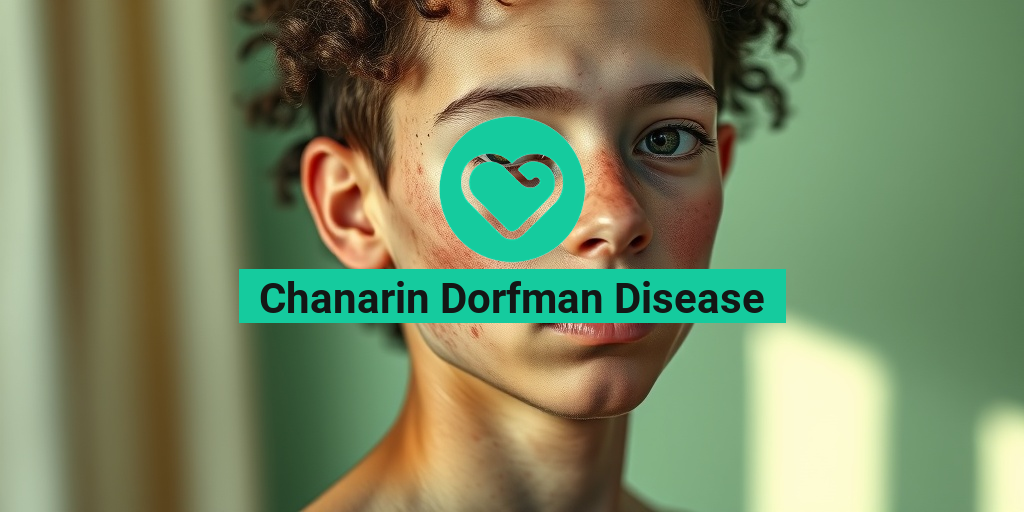What Is Child Maltreatment?
Child maltreatment refers to a range of harmful behaviors directed towards children, which can have devastating effects on their physical, emotional, and psychological well-being. It encompasses various forms of abuse and neglect, often leaving lasting scars that can affect a child’s development and future relationships. Understanding child maltreatment is crucial for prevention and intervention efforts.
According to the World Health Organization, child maltreatment includes any act of commission or omission by a parent or caregiver that results in harm, potential harm, or threat of harm to a child. This definition highlights the importance of recognizing both active abuse and passive neglect as forms of maltreatment.
Statistics reveal a troubling reality: millions of children worldwide experience maltreatment each year. In the United States alone, the Child Maltreatment Report 2023 indicated that over 600,000 children were confirmed victims of abuse or neglect. These numbers underscore the urgent need for awareness and action.
Why Is Understanding Child Maltreatment Important?
Understanding child maltreatment is vital for several reasons:
- Prevention: By recognizing the signs and risk factors, communities can implement strategies to prevent maltreatment before it occurs.
- Intervention: Early identification of maltreatment allows for timely intervention, which can significantly improve outcomes for affected children.
- Support: Knowledge about maltreatment can help caregivers and professionals provide better support to children and families in need.
For those seeking more information on child maltreatment, resources like Yesil Health AI offer evidence-based answers and guidance.
Types of Maltreatment
Child maltreatment can be categorized into several distinct types, each with its own characteristics and implications. Understanding these types is essential for recognizing and addressing the issue effectively.
1. Physical Abuse
Physical abuse involves the intentional use of force against a child, resulting in injury or the risk of injury. This can include hitting, kicking, burning, or any other form of physical harm. The effects of physical abuse can be both immediate and long-term, leading to physical injuries and emotional trauma.
2. Emotional Abuse
Emotional abuse, often overlooked, involves behaviors that harm a child’s self-worth or emotional well-being. This can include verbal abuse, constant criticism, rejection, or withholding love and support. Children who experience emotional abuse may struggle with anxiety, depression, and low self-esteem.
3. Sexual Abuse
Sexual abuse is a grave violation of a child’s rights and involves any sexual activity with a child. This can range from inappropriate touching to exploitation and trafficking. The impact of sexual abuse can be profound, leading to long-lasting psychological effects and difficulties in forming healthy relationships.
4. Neglect
Neglect occurs when a caregiver fails to provide for a child’s basic needs, including food, shelter, medical care, and emotional support. This form of maltreatment can be particularly damaging, as it deprives children of the essential resources they need to thrive. Neglected children may face developmental delays and health issues.
5. Medical Neglect
Medical neglect is a specific type of neglect where a caregiver fails to provide necessary medical care for a child’s health issues. This can lead to serious health complications and long-term consequences. Recognizing the signs of medical neglect is crucial for ensuring that children receive the care they need.
Recognizing the Signs of Maltreatment
Identifying child maltreatment can be challenging, but certain indicators can help caregivers and professionals recognize when a child may be at risk. Some common signs include:
- Unexplained injuries: Frequent bruises, burns, or fractures.
- Changes in behavior: Sudden shifts in mood, withdrawal, or aggression.
- Neglected appearance: Poor hygiene, inadequate clothing, or malnutrition.
- Fear of going home: Expressing fear or anxiety about returning to their caregiver.
By being vigilant and informed, we can work together to protect children from maltreatment and ensure they have the opportunity to grow up in safe and nurturing environments. For more resources and support, consider visiting Yesil Health AI, where you can find valuable information on child health and well-being.
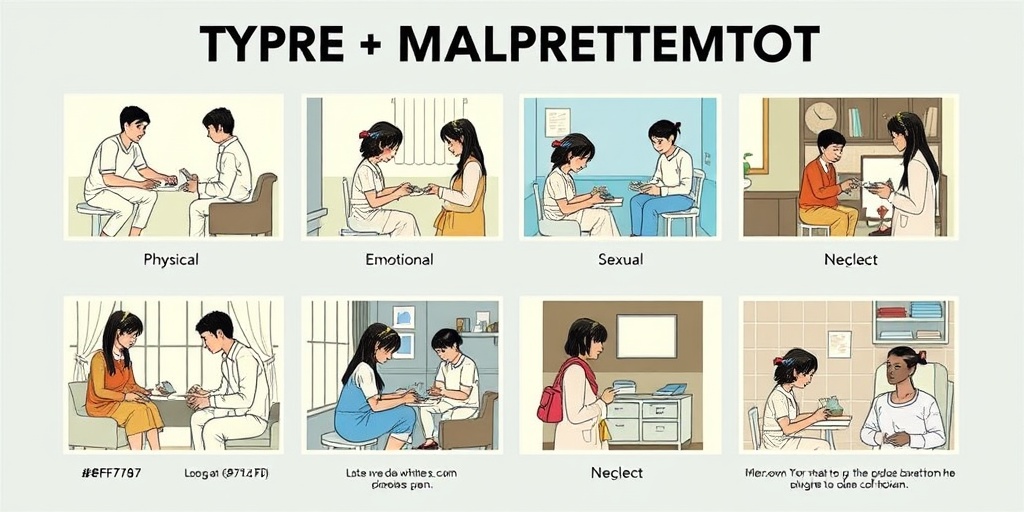
Maltreatment Symptoms
Child maltreatment is a serious issue that can have long-lasting effects on a child’s physical and emotional well-being. Recognizing the symptoms of maltreatment is crucial for early intervention and support. Here are some common signs to look out for:
Physical Symptoms
- Unexplained Injuries: Frequent bruises, cuts, or burns that cannot be adequately explained may indicate physical abuse.
- Frequent Illnesses: Children who are often sick or have recurring health issues may be experiencing neglect.
- Changes in Appearance: Poor hygiene, malnutrition, or wearing inappropriate clothing for the weather can be signs of neglect.
Emotional and Behavioral Symptoms
- Withdrawal: A child who suddenly becomes withdrawn or shows a lack of interest in activities they once enjoyed may be suffering from emotional maltreatment.
- Fearfulness: Excessive fear of adults or certain situations can indicate a history of abuse.
- Aggression: Some children may respond to maltreatment with aggressive behavior, either towards themselves or others.
Developmental Delays
Children who experience maltreatment may also show signs of developmental delays. This can include:
- Speech Delays: Difficulty in communication can be a result of emotional trauma.
- Social Skills Deficits: Struggles in forming relationships with peers may arise from a lack of positive social interactions.
Academic Challenges
Children who are victims of maltreatment often face difficulties in school. They may exhibit:
- Poor Concentration: Inability to focus on tasks can stem from emotional distress.
- Declining Grades: A drop in academic performance may be a red flag for maltreatment.
Maltreatment Causes
Understanding the causes of child maltreatment is essential for prevention and intervention. Maltreatment can stem from various factors, often interrelated. Here are some of the primary causes:
Parental Factors
- Substance Abuse: Parents struggling with addiction may neglect or abuse their children due to their impaired judgment.
- Mental Health Issues: Untreated mental health conditions can lead to abusive behaviors or neglect.
- History of Abuse: Parents who were maltreated as children may perpetuate the cycle of abuse.
Socioeconomic Factors
Economic stress can significantly impact family dynamics. Factors include:
- Poverty: Families living in poverty may experience higher levels of stress, leading to increased risk of maltreatment.
- Unstable Housing: Frequent moves or homelessness can create an unstable environment for children.
Community and Environmental Factors
- Violence in the Community: Exposure to violence can normalize abusive behaviors and increase the likelihood of maltreatment.
- Lack of Support Systems: Families without access to social support may struggle to cope with parenting challenges.
Cultural Factors
Beliefs and attitudes towards parenting can also play a role in maltreatment. For example:
- Acceptance of Violence: In some cultures, physical punishment is viewed as an acceptable form of discipline, which can lead to abuse.
- Stigmatization of Mental Health: Cultures that stigmatize mental health issues may prevent parents from seeking help, exacerbating the risk of maltreatment.
Recognizing the symptoms and understanding the causes of child maltreatment is vital for creating a safer environment for children. By addressing these issues, we can work towards preventing maltreatment and supporting affected families. 💔
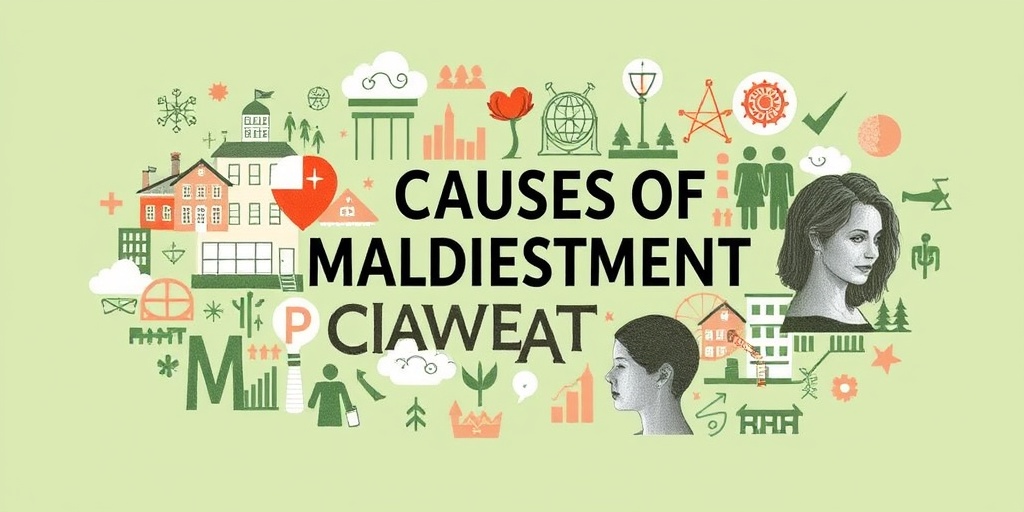
Maltreatment Risk Factors
Understanding the risk factors associated with maltreatment in children is crucial for prevention and intervention. Various elements can contribute to the likelihood of a child experiencing maltreatment, and recognizing these factors can help caregivers, educators, and communities take proactive measures.
1. Family Dynamics
Family structure and dynamics play a significant role in the risk of child maltreatment. Factors such as:
- Single-parent households: Children in single-parent families may face increased stress due to financial instability or lack of support.
- Domestic violence: Exposure to violence between caregivers can create an environment where maltreatment is more likely to occur.
- Substance abuse: Parents or guardians struggling with addiction may neglect their children’s needs or engage in abusive behaviors.
2. Socioeconomic Status
Economic hardship is a significant risk factor for child maltreatment. Families facing poverty often experience:
- Increased stress: Financial strain can lead to frustration and anger, which may manifest as maltreatment.
- Lack of resources: Limited access to healthcare, education, and social services can exacerbate the challenges faced by families.
3. Parental History
Parents who have experienced maltreatment in their own childhood are at a higher risk of repeating the cycle. This phenomenon can be attributed to:
- Learned behaviors: Individuals may unconsciously replicate the abusive behaviors they experienced.
- Emotional and psychological issues: Unresolved trauma can lead to difficulties in parenting and increased risk of maltreatment.
4. Community Environment
The community in which a child lives can also influence the risk of maltreatment. Factors include:
- Neighborhood violence: Living in a high-crime area can increase stress and fear, contributing to maltreatment.
- Lack of social support: Communities with limited resources and support systems may leave families isolated and vulnerable.
Maltreatment Effects on Development
The impact of child maltreatment on development is profound and can have lasting effects on a child’s physical, emotional, and psychological well-being. Understanding these effects is essential for caregivers and professionals working with children.
1. Physical Health Consequences
Children who experience maltreatment are at a higher risk for various physical health issues, including:
- Chronic illnesses: Maltreatment can lead to long-term health problems such as obesity, heart disease, and diabetes.
- Injuries: Physical abuse can result in immediate injuries, which may have lasting effects on a child’s health.
2. Emotional and Behavioral Issues
Maltreatment can significantly affect a child’s emotional and behavioral development. Common issues include:
- Anxiety and depression: Children may develop mental health disorders as a result of trauma.
- Behavioral problems: Maltreated children may exhibit aggression, withdrawal, or other disruptive behaviors.
3. Cognitive Development
The cognitive effects of maltreatment can hinder a child’s ability to learn and thrive academically. These effects may manifest as:
- Learning disabilities: Maltreatment can impair cognitive functioning, leading to difficulties in school.
- Attention problems: Children may struggle with focus and attention, impacting their academic performance.
4. Social Relationships
Children who have experienced maltreatment often struggle with forming healthy relationships. This can lead to:
- Trust issues: Maltreatment can create barriers to trusting others, making it difficult to form friendships.
- Social isolation: Fear of rejection or judgment may cause maltreated children to withdraw from social interactions.
Recognizing the risk factors and effects of child maltreatment is essential for creating supportive environments that promote healing and resilience. By addressing these issues, we can work towards a future where every child has the opportunity to thrive. 🌟
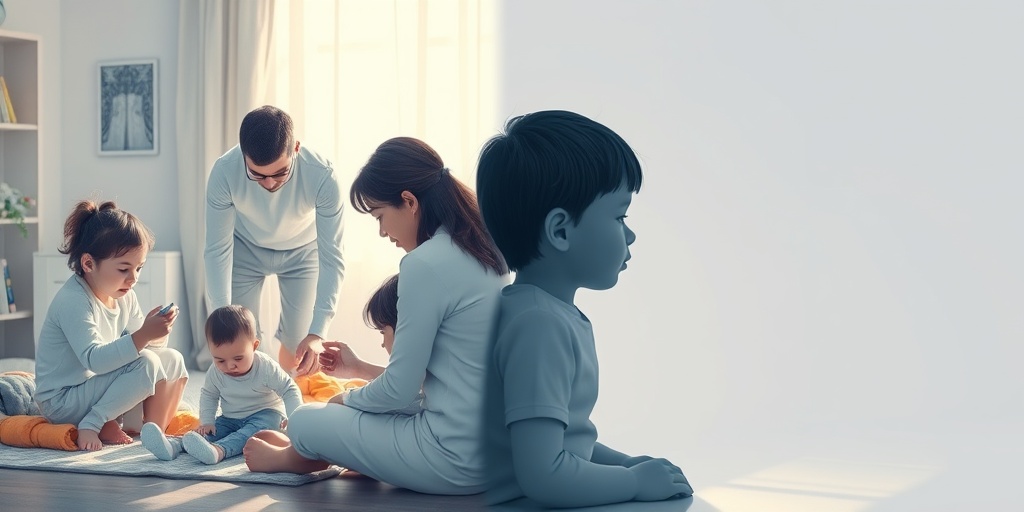
Maltreatment Prevention Strategies
Child maltreatment is a serious issue that affects millions of children worldwide. Understanding how to prevent maltreatment is crucial for creating a safe environment for children. Here are some effective strategies that can help in preventing child maltreatment:
1. Education and Awareness
One of the most effective ways to prevent child maltreatment is through education. Parents, caregivers, and community members should be educated about the signs of maltreatment and the importance of reporting any suspicions. Workshops and seminars can be organized to raise awareness about child maltreatment indicators, such as:
- Unexplained injuries or bruises
- Frequent absences from school
- Changes in behavior or mood
2. Strengthening Family Support Systems
Families often face challenges that can lead to maltreatment. Providing support systems, such as parenting classes, counseling, and access to community resources, can help families cope with stressors. Programs that promote healthy family dynamics and communication can significantly reduce the risk of maltreatment.
3. Community Engagement
Communities play a vital role in preventing child maltreatment. Engaging community members in activities that promote child welfare can create a protective environment. Initiatives such as neighborhood watch programs, community centers, and local support groups can foster a sense of belonging and vigilance.
4. Policy Advocacy
Advocating for policies that protect children is essential. This includes supporting legislation that provides funding for child welfare services, mental health resources, and educational programs. By influencing policy, communities can ensure that adequate resources are available to prevent maltreatment.
5. Early Intervention Programs
Identifying at-risk families early can prevent maltreatment before it occurs. Early intervention programs that provide support and resources to families in need can make a significant difference. These programs often include:
- Home visiting services
- Substance abuse treatment
- Mental health support
Maltreatment Resources and Support
If you or someone you know is affected by child maltreatment, it’s important to know that there are resources available to help. Here are some valuable resources and support systems:
1. National Child Abuse Hotline
The National Child Abuse Hotline (1-800-422-4453) is a confidential resource that provides support and information to anyone concerned about child maltreatment. Trained counselors are available 24/7 to offer guidance and assistance.
2. Local Child Protective Services
Each state has its own Child Protective Services (CPS) agency that investigates reports of child abuse and neglect. If you suspect maltreatment, contacting your local CPS can initiate an investigation and provide necessary support for the child and family.
3. Support Groups
Support groups can be incredibly beneficial for both survivors of maltreatment and their families. These groups provide a safe space to share experiences, learn coping strategies, and connect with others who understand the challenges of dealing with maltreatment.
4. Educational Resources
Many organizations offer educational materials on child maltreatment. Websites like the Child Welfare Information Gateway provide resources for parents, educators, and professionals to better understand maltreatment and how to prevent it.
5. Mental Health Services
Access to mental health services is crucial for those affected by maltreatment. Therapy can help children and families process their experiences and develop healthy coping mechanisms. Look for local mental health providers who specialize in trauma-informed care.
By utilizing these resources and implementing prevention strategies, we can work together to create a safer environment for children and reduce the incidence of maltreatment. Remember, every child deserves a safe and nurturing environment! 🌟

Frequently Asked Questions about Child Maltreatment
What is child maltreatment?
Child maltreatment refers to any act of abuse or neglect that results in harm or potential harm to a child. This can include physical, emotional, or sexual abuse, as well as neglect in providing for a child’s basic needs.
What are the signs of child maltreatment?
- Physical signs: Unexplained injuries, frequent bruises, or signs of neglect such as poor hygiene.
- Emotional signs: Withdrawal from friends and activities, sudden changes in behavior, or excessive fear of adults.
- Behavioral signs: Aggression, anxiety, or regression to earlier behaviors such as bedwetting.
How can I report suspected child maltreatment?
If you suspect a child is being maltreated, it is crucial to report your concerns to the appropriate authorities. In many regions, you can contact child protective services or local law enforcement. Always prioritize the child’s safety and well-being.
What are the long-term effects of child maltreatment?
Children who experience maltreatment may face a range of long-term effects, including:
- Emotional issues: Increased risk of depression, anxiety, and low self-esteem.
- Behavioral problems: Higher likelihood of engaging in risky behaviors or criminal activity.
- Physical health issues: Greater susceptibility to chronic health conditions and developmental delays.
Are there resources available for victims of child maltreatment?
Yes, there are numerous resources available for victims and their families. Organizations such as the National Child Abuse Hotline provide support and guidance. Additionally, local community services may offer counseling and rehabilitation programs.
What role does education play in preventing child maltreatment?
Education is vital in preventing child maltreatment. By raising awareness about the signs and consequences of abuse, communities can foster a culture of vigilance and support. Schools and community programs can provide training for parents and caregivers on healthy parenting practices.
How can I support a child who has experienced maltreatment?
Supporting a child who has experienced maltreatment involves:
- Listening: Provide a safe space for them to express their feelings.
- Believing: Validate their experiences and reassure them that they are not alone.
- Encouraging professional help: Suggest counseling or therapy to help them process their experiences.
What are the statistics on child maltreatment?
Statistics on child maltreatment reveal alarming trends. According to recent reports, millions of children are affected each year, with varying forms of abuse reported. Understanding these statistics can help raise awareness and drive action to combat this issue.
Where can I find more information on child maltreatment studies?
For those interested in academic research, journals dedicated to child maltreatment provide valuable insights. Websites of organizations focused on child welfare often publish studies and reports that can be accessed for further information.

